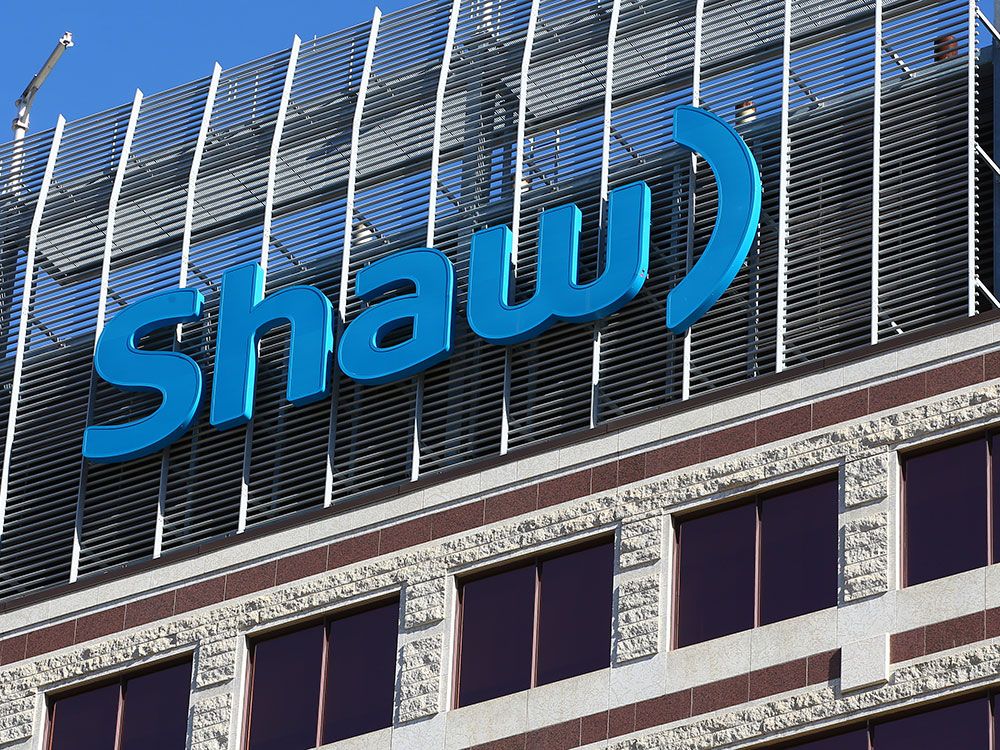Vass Bednar: The federal government bought a pipeline. Maybe it should buy Shaw?

A purchase of the telecom by the federal government could help to ensure public accountability and diversity of networks

Article content
The hot takes on the Rogers outage have cooled, but not before a frenetic resurgence of classic policy proposals intended to improve Canada’s telecommunications sector.
Advertisement 2
Story continues below
Article content
We have wrestled with the question of whether the internet is now an essential service, rather than simply a “basic” one.
Much of the commentary has come with an implicit assumption that more public options or interventions in the telecommunications industry would be better aligned with the interests of everyday people once the profit motive is removed. It would also add a little more choice in a constrained and greedy marketplace.
Ultimately, the collapse of Rogers Communications Inc.’s system raised even more questions about the future of its planned takeover of Shaw Communications Inc., the No. 4 carrier.
Rogers attempted to alleviate competition concerns by selling Shaw’s Freedom Mobile assets to Quebecor Inc., run by billionaire Pierre Karl Péladeau, who inherited the company from his father. Péladeau insists that Freedom would allow him to act on a long-held desire to expand beyond Quebec. Skeptics might reasonably conclude the arrangement only further entrenches Canada’s clubby family compact.
Advertisement 3
Story continues below
Article content
It is good to be reminded of the various policy options, and it’s important to reorient ourselves to the range of policy possibilities. But there has been a lack of clarity on how you’d achieve a more government-owned telecom infrastructure, if that is indeed the best way to give people an opportunity to switch away from their current oligopolistic providers.
Too often, a quick-fix remedy was proposed that would see people paying even more out of pocket on a monthly basis in order to de-bundle themselves and diversify their home internet and cell phone across multiple providers. Indeed, Canadians were chided for not building in sufficient — and costly— redundancies to their personal suite of internet services.
Advertisement 4
Story continues below
Article content
Spending more is not a sustainable solution.
Enticing offers from competitors may have smoothed the pain of switching providers. But switching — another remedy that puts everyday people to work instead of the state — is simply another reminder of the general lack of choice in Canada. Plus, it comes down to Canada’s Internet Code, and not benevolence.
Industry insiders have scoffed at the momentum building for a public option. They rightly point out that it would be unnecessarily duplicative and expensive to build out the physical infrastructure — the facilities — on which services would compete. Indeed, it is so expensive that private companies have not bothered to build anything for six per cent of the country. A good part of the other 94 per cent was at least partially taxpayer funded, and the Universal Broadband Fund is often a three-way private, provincial, and federal split.
Advertisement 5
Story continues below
Article content
And yet — as many have reminded — a public option is not without modest precedent in our country. There is the longstanding example of Saskatchewan Telecommunications, a Crown-owned telecommunications firm, as well as promising examples of municipalities linking up their fibre cables to build municipal networks, such as York Region’s YorkNet, TBayTel, KNet, and Eeyou Communications Network (ECN) are other examples.
The more you dig around, the more apparent it becomes that Canada’s telecommunications system is “gnarly and complex.” It has evolved over time and it will continue to evolve. For instance, the addition of low-orbit satellite options are an example of a privately held company competing with Canadian ones. Our government has invested significantly in a potential Canadian competitor to Elon Musk-owned Starlink: Telesat Canada.
Advertisement 6
Story continues below
Article content
Despite the ongoing flexibility to iterate our system, it remains resilient to new competitors. Manitoba wireless carrier XPlore Mobile Inc. recently announced it is shutting down. It’s topical that a small independent provider didn’t work out. The company attributed its decision to a slow and uncertain regulatory environment.
After “Red Friday,” much of the commentary has surveyed a resurgence of recurring ideas related to recalibrating telecommunications in Canada. It has lacked wildcards. So how about a thought experiment: if the owners of Shaw Communications want out, maybe the Government of Canada should buy it.
If the Rogers purchase falls apart, what happens to Shaw? The Shaw family has indicated that it is unwilling to spend the money required to make the shift to the next generation of internet technology. But if the Rogers attempt fails because of competition concerns, then surely BCE Inc. and Telus Corp. would also be disqualified as suitors.
Advertisement 7
Story continues below
Article content
The Competition Bureau has already recommended a full block of the merger, and the House industry committee similarly recommended against the transaction. Scholars also have called for the merger to be blocked, detailing the market harms likely to result from the merger. Yet blocking the merger does not create more competition, it simply maintains the status quo.
But what people seem to want is more robust competition. Polling firm Ipsos SA found in January that a strong majority of Canadians (72 per cent) believe that the telephone and cable industry needs more competition. Were they to be surveyed again, surely that number would be even higher. Canadians are tired of increasing fees and a lack of choice and seem to have a growing mistrust of telecommunications firms that collected more than $240 million from Canada’s wage-subsidy program and then raised shareholder payouts.
Advertisement 8
Story continues below
Article content
Buying Shaw would be akin to the government’s 2018 purchase of the Trans-Mountain pipeline, albeit at a price 13 times greater than the pipeline. While the Canadian government does not plan to be the long-term owner of the pipeline, it could hold onto Shaw as the nation starts to migrate towards a system where the facilities are publicly owned and internet service providers compete on facilities, as they do in Australia. If the infrastructure was publicly controlled, there would be less resistance to wholesaling and we could get prices closer to cost.
Canada was humiliated on an international stage by the scale and scope of “Red Friday,” and citizens now appear to be demanding a comprehensive response — just as there was public dismay over Canada’s inability to get its energy to the West Coast, reducing its dependence on the U.S. market. While Industry Minister François-Philippe Champagne’s meeting with telecom CEOs was an important first step, it also inadvertently highlighted the tension between public institutions and private ones.
Advertisement 9
Story continues below
Article content
-

Competition watchdog says it needs more time to probe proposed sale of Freedom Mobile
-

Rogers replaces technology chief after massive outage draws fire
-
![TORONTO ONTARIO: JULY 11, 2022—COMMUNICATIONS—Customers continue to question recent day long blackout of Rogers internet, cell phone and cable services , Monday July 11, 2022. [Photo Peter J. Thompson/National Post] [National Post/TBA for National Post]](https://smartcdn.gprod.postmedia.digital/nationalpost/wp-content/uploads/2022/07/no0715rogers.jpg?h=96&strip=all&quality=5)
Rogers has its work cut out for it in outage aftermath as Shaw merger deadline looms
Calls for an inquiry may help with transparency and accountability, and an inquiry could be productive for other companies and jurisdictions that need to learn from the Rogers outage. But a total rethink of the sector, including the optimal role for the state, likely won’t surface as one of the recommendations
The public model is proven in parts of Canada, where it coexists and competes with private companies. A purchase of Shaw by the federal government could help to ensure public accountability and diversity of networks, which have emerged as legitimate issues in the aftermath the Rogers outage. It’s also a good asset: taxpayers would be all but guaranteed a solid return on invested capital, as owning a telecommunications company would come with none of the political and climate risk that comes with owning a pipeline.
Advertisement 10
Story continues below
Article content
Is it likely? Probably not, for any number of political and technical reasons. But the Rogers outage was a technical failure that reinforced the interconnectedness and fragility of our digital infrastructure. Government regulations shaped the system we have, and the government could continue to evolve and improve telecommunication by considering purchasing Shaw as part of blocking the proposed merger with Rogers.
The necessary next step to correct a market failure — as with pipelines — might be to consider community control of the asset.
Financial Post
Vass Bednar is an adjunct professor of political science at McMaster University and executive director of the school’s Master of Public Policy in Digital Society program.
Advertisement
Story continues below


![TORONTO ONTARIO: JULY 11, 2022—COMMUNICATIONS—Customers continue to question recent day long blackout of Rogers internet, cell phone and cable services , Monday July 11, 2022. [Photo Peter J. Thompson/National Post] [National Post/TBA for National Post]](https://smartcdn.gprod.postmedia.digital/nationalpost/wp-content/uploads/2022/07/no0715rogers.jpg?h=96&strip=all&quality=80)





